The first multi-day spiritual retreat with HKIS faculty in many years was held October 14-15, 2017 at Tao Fung Shan retreat center above Shatin.
Dear Teachers,
Welcome to a very special retreat, which will be held on Saturday-Sunday, January 26-27 at the Tao Fung Shan Christian Centre above Shatin. We are writing this background to the retreat to entice you to come as well as introduce you to the extremely rich content that will be offered. We will present the writings of three major religious traditions: the Taoist classic Dao De Jing; the writings of the early Christian desert fathers and mothers of the 4th and 5th century; and selected readings from the Hindu classic scripture the Bhagavad Gita. Both of us have recently read the Dao De Jing and found it to be the most accessible ancient wisdom text that we’ve ever read. Additionally, Marty found study of the Christian desert tradition to be totally eye-opening only a few years ago on a retreat in New Zealand, while the foundations of Sangeeta’s spiritual life – like many others from the Indian subcontinent – are found in the teachings of the Bhagavad Gita. To bring these rich traditions together for a weekend of study, discussion, practice, and quiet abiding is a privilege for us.
Starting Point
Our starting point is the quest for wisdom. We come to these texts with the big questions that we need to ask: in the busyness of our lives, what’s worth our time; how do we approach a world that is racing ahead technologically but seems to be in moral regression; how do we interact with a World of Spirit that we assume is true, but still seems beyond our grasp; how should we live our lives, knowing that our time on this earth is moving towards a finite end; how do we live in accordance with larger forces for good in the world? These are the deeper stirrings that move us to read these texts.
All three traditions produced writings as the distillation of hundreds of years of  experimenting with the perennial questions of human existence. Each came away with a distinct flavor characteristic of the particular culture that produced it, yet at the same time, the teachings are so universal and wise that anyone can easily wade into their depth with only a minimum of preparation. The three together can bring a cross-cultural focus – like a tri-Venn diagram – to the quest to live a life of greater purpose and wisdom.
experimenting with the perennial questions of human existence. Each came away with a distinct flavor characteristic of the particular culture that produced it, yet at the same time, the teachings are so universal and wise that anyone can easily wade into their depth with only a minimum of preparation. The three together can bring a cross-cultural focus – like a tri-Venn diagram – to the quest to live a life of greater purpose and wisdom.
Our approach will not be primarily academic. We will follow Alan Watts’ suggestion in Tao: The Waterway Course, “The reader must now, and at each subsequent subsequent reading, allow himself to be in a proper state of mind. You are asked – temporarily, of course – to lay aside all your philosophical, religious, and political opinions, and to become almost like an infant, knowing nothing. Nothing, that is except what you actually hear, see, feel, and smell….Do not expect any special result, for in this wordless and idealess state, where can there be past or future, and where any notion of purpose? Stop, look, and listen…and stay there awhile before you go on reading” (36).
Tao: The Waterway Course, “The reader must now, and at each subsequent subsequent reading, allow himself to be in a proper state of mind. You are asked – temporarily, of course – to lay aside all your philosophical, religious, and political opinions, and to become almost like an infant, knowing nothing. Nothing, that is except what you actually hear, see, feel, and smell….Do not expect any special result, for in this wordless and idealess state, where can there be past or future, and where any notion of purpose? Stop, look, and listen…and stay there awhile before you go on reading” (36).
Dao De Jing
We will begin our first morning of the retreat with the Dao De Jing, the 6th century BCE  text written by Lao Tzu, the traditional founder of Taoism. “Dao” means “the way” and connotes a universal force that permeates the cosmos. “De” refers to “virtue;” most simply put, it means how to live rightly in this life.* If we consider “Dao” and “De,” then, we ask as we begin our retreat: in the context of everything we can see from this retreat center and all that we know of ourselves and our world, how can we live the wise way? It seems fitting for us living in Asia and being atop Tao Fung Shan – literally, “the way of the Spirit wind and mountain” – to begin our retreat to read this great Chinese classic as a way to orient ourselves in this beautiful natural setting.
text written by Lao Tzu, the traditional founder of Taoism. “Dao” means “the way” and connotes a universal force that permeates the cosmos. “De” refers to “virtue;” most simply put, it means how to live rightly in this life.* If we consider “Dao” and “De,” then, we ask as we begin our retreat: in the context of everything we can see from this retreat center and all that we know of ourselves and our world, how can we live the wise way? It seems fitting for us living in Asia and being atop Tao Fung Shan – literally, “the way of the Spirit wind and mountain” – to begin our retreat to read this great Chinese classic as a way to orient ourselves in this beautiful natural setting.
The Dao De Jing asks us in the simplest language to consider truths that are evident in nature and in ourselves. Let’s take one example:
“The Tao contains within itself
unchanging tranquility and solitude.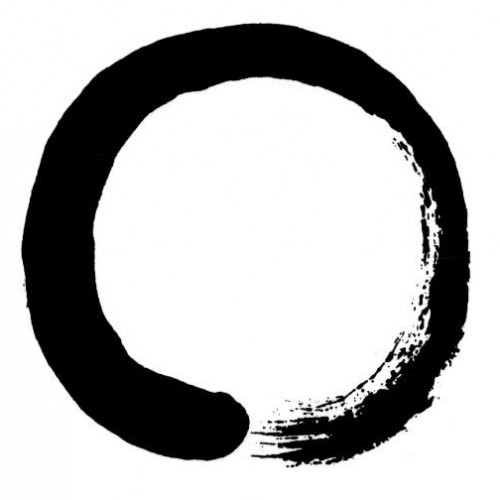
It is present wherever we turn
and provides inexhaustible compassion to all beings.Thus it may be considered
the Mother of the Universe.
It has no name,
but if we have to refer to it we call it Tao.
It can also be called The Great Mystery
from which we come, in which we live,
and to which we return.”
Paradox is evident even from the first read. It has no name, but we can call it the Tao; it is universal, yet it includes the particularity of our lives; it seems impersonal, yet it is the mother of all. There may be no better text in the world for us to begin our retreat, asking us to open our body-mind-heart to its widest aperture to ask “what is reality” and “who am I in relationship to in this great mystery of life.” We begin in wonder, compassion, and mystery.
Christian Desert Fathers and Mothers
On Saturday afternoon we will turn our attention to the Christian Desert Fathers and Mothers of the 4th-5th century. Christianity, as you may know, suddenly changed from an illegal cult to the official religion of the Roman Empire in 313 CE during the reign of Constantine. As Christianity came to be associated with empire, small bands of followers left their relative comforts for the deserts of Egypt, Syria, and Palestine to discover how to live the true Christian path.
Only in the 1960’s did the modern world discover that these “empiricists of the spirit,” as spiritual teacher Cynthia Bourgeault calls them, left behind a treasure trove of writings sharing what they had learned from their two centuries of experimentation. What we find are pithy Wisdom sayings built into story form. These “hand grenades for the soul,” as Cynthia calls them, cause us to waken to the possibility of a life lived in harmony with God. Here is an example:
“Abba Moses asked Abba Sylvanus, ‘Can a man lay a new foundation every day?’ The old man said, ‘If he works hard, he can lay a new foundation at every moment.’
During this retreat, we hope that you are asking this same question: how can I hit the reset button on my life and build anew on rock rather than shifting sand, to use one of Jesus’s metaphors? Abba Sylvanus replies, “We can start in this very moment,” which recalls Jesus’ own teaching that the Kingdom is not “here” or “there” but rather “is in your midst” (Luke 17:21). We will look for it in our midst throughout the weekend.

Bhagavad Gita
On Sunday we will pivot to the Bhagavad Gita, considered the fountainhead of Hindu philosophy and psychology, and the guiding force of all Hindus. The Indian sages grappled with two seemingly opposing themes – how to live lives of meaning and purpose during our earthly journey, while at the same time seeking liberation from the world of bondage and suffering. Through following the teachings of the Gita, a person can become creative and successful in the external world, finding joy and fulfilment through their work; simultaneously, one can also find inner tranquillity and pursue the ultimate goal of self realization. The Gita thus provides the technology for marrying the secular and the sacred. One of the key tenets of this technology is that one should choose to do meaningful work while not seeking any particular result or reward – aiming instead for a state of equanimity unshaken by success or failure.
“You have control over action alone, not of its fruits. Act not for the fruits of your action, and do not be attached to inaction. Established in yoga, Arjuna, performs actions, having relinquished attachment while remaining balanced in success and failure. This evenness of mind is called yoga.”
The Indian scriptures further articulated a methodology for weaving various human desires into a unified quest for transcendence. Our basic desires fall into four camps, known as purushartha. These are: the desire for pleasure (kama), the desire for means to fulfill one’s purpose (artha), the desire to become who one was meant to become (dharma), and finally the desire for spiritual realization and ultimate freedom (moksha). If these are not harmonized, we are unable to live in such a way that allows us to pursue both worldly pleasures and spiritual realization. However if we can work as per our dharma (our unique purpose – what we were born to do), then we can acquire artha (wealth) to support our cause, and while doing this we transform the nature of desire (kama) into a proper craving for liberation (moksha) above all other desires.
“One’s own dharma, even if lesser in merit, is better than the dharma of another.” (3.35)
“That person in whom desires arise as waters enter the unchanging ocean, he is at peace – not one who longs to fulfill desires.” (2.70)
For this retreat we will ask ourselves, how can we pursue our life purpose, our dharma? How can we shape our life according to the innate wisdom that sustains all life, so that we become a veritable “force of nature?” And while doing so how can we cultivate a degree of non-attachment to the fruits of our actions, surrendering to universal laws unfathomable by human perception? What is our relationship to accumulation of wealth? And finally, where do we stand in terms of transcending worldly pleasures and pursuing the ultimate bliss of self realization?

Conclusion
We will work with these three incredibly rich Wisdom Traditions in personally reflective, interactive, and frequently embodied ways. Along with reading and reflecting on these teachings, each of us will participate in various spiritual practices that bring the body-mind-heart self into greater alignment: conscious walking, meditation, visualization, heart centering, and letting go rituals. We expect that participants will gain a greater sense of centeredness and life direction through our weekend reflection. We hope you will join us!

Notes
- * The key relationship of Dao and De should be considered in terms of the Chinese worldview, which begins with the believe that the universe is filled with chi. The individual’s main goal is to cultivate a sensitivity to this universal force that can flood into one’s life both within – through intensive “being”- and beyond – through extensive “doing” with family and social relations. Every life event creates opportunities to increase or diminish the self’s intensive and extensive chi field. By intentionally creating habits of right conduct and right relations, one strengthens that chi force within oneself, creating a reciprocal energetic exchange between self and others, to the point that any distinction between self and others becomes absorbed in the sea of chi. Self-cultivation involves absorbing chi from past exemplary individuals in order to become communal resources who are capable of amplifying this cosmic energy mainly through inspiring others. Our lives, then, are directly integrated into the energetic ebb and flow of the cosmos.
Reflections on Last Year’s Retreat
Hi Marty,
Thanks for your email, and thanks again to you and Sangeeta for organizing and running such a richly rewarding and enjoyable retreat. I loved everything about it! The time it allowed me to have for myself. The communion with fellow traveler’s on “the path”. The range and diversity of activities and experiences. The stunning location! And the centrality of that intersection between the horizontal and vertical that informed and opened up possibilities for new insights and greater appreciation for our presence and purpose in this world.
I miss being in that space with you all, so if there’s one suggestion I might add, it would be to include a discussion on “transitioning back to the horizontal”, meaning, helping participants to address questions of how their everyday life is different from that of the retreat (or the same), and what resources or reserved of energy from the retreat can now be accessed to deal with the stress and “doing” of every day life. This was of course already discussed in formal and informal ways throughout the retreat (was, perhaps, the whole purpose of the retreat!), but it might be nice to address is directly towards the end once more as we cope with returning to life as it is and could be.
LOTS to talk with you about to with DotBe! I had a great training/workshop and felt spoiled to be able to do it in London.
See you in the office!
Leo
Hi Marty,
The retreat was a first of its kind for me. I was so pleased to be on the retreat with my husband as it provided an oasis for us and allowed us to reconnect in a spiritual way at a level different from anything before.
The way you and Sangeeta organized the retreat as well as the choice of location for the retreat itself were key to everyone’s comfort throughout the weekend. We easily felt safe to explore and share our spirituality. I believe every one of us had an aha moment!
Please do this again!
Brenda
Dear Marty,
It was a great retreat trip at Tao Fung Shan during the fall break. When I looked at the group photo that we took there, it reminds me of many nice group memory. Thank you and Sangeeta once again for the wonderful experience that you have brought us. I have put some personal thoughts in blue to respond to the questions you raised.
- Let me know what worked for you on the retreat and what you got out of it.
I really enjoyed the sensation training both in the conference room and outdoors. It made me have more awareness of the connections between my mind, body and heart.
I also found the sharing sessions after the free time and the 4-7-8 in the small room very special to me. I learned from everyone on the trip in that sharing session.
During the free time, you have asked us to bring something creative back. Tom wrote a poem. Jackie made a paper box. Brenda and Brent had some beautiful sketch. Leo came up with a lesson plan. Gabriel made a beautiful plants with the wood and grasses. Belinda and I shared some photos and video and the story of “the Journey to the West”. From that activity, I understood that we all have created different things even when we have stayed in the same retreat centre and we have went through the same retreat agenda.
Thinking of our students, it is the same. Although the teacher’s input is the same, their intake could be different in their own unique ways. But we teachers, we have to be calm, interesting, thoughtful, mindful, peaceful in our classes, so that you could influence or empower the students with a better learning experience as their role models.
- Offer suggestions about any aspect of the retreat.
I would like to suggest adding some more morning meditations before breakfast and evening meditations before going to sleep, maybe on a regular basis? like everyday of the trip there is morning meditation and evening meditation? or meditation with peaceful music?
Thank you for reading!
Vivian
Hi Marty,
What worked for me was retreating to a different and calm space in Hong Kong. It also worked the combination of religious perspectives.
On Saturday night, when Sangeeta asked to be mindful about the food, I went to eat and I had forgotten about the task. When I took the first bite, the flavours made an impression and reminded me of what I was supposed to do. After that, I smelled and saw and kept tasting the rice, the eggs with tomatoes, the broth with some Chinese spinach just as they were presented.
Last night, I was reminded of the retreat when I had a difficult parent. It still affected me, but I was more conscious of it. I took a breath.
Besides, I had a great time with all the participants.
Thank you again,
Gabriel
Hi Marty,
Thanks for the great experience. I have been wanting to do this for a long time. However, I always get lost in the busy work and life,or lack of encouragement from people. I feel that this retreat came at the best time , best place, best situation and with the best group of people. I know it’s going to be a long journey to find balance among body, heart, and mind. Luckily now I know there’re a group of people I can reach out for help and support whenever I have questions or want to stop trying.
I enjoyed all of the activities. I found the hardest was to share my experience in public and creative transformation. I know it is because of my cultural, educational background, and my personality, but I am glad that we did that. This is the time that I learned that I have to accept who I am, but at the same time, I learn not to quit, resilience.
I really enjoyed the different ways of meditation. I have been able to try them at different time at school and home. I have shared my retreat experience with my students and we did some meditation in the class, and I feel that I don‘ t have to talk too much about what I have learned, but showing them by doing it, showing them what self-compassion, empathy, surrender, gratitude is. I’m sure that they will feel the positive energy and will see the benefit.
I really appreciate the time and effort you and Sangeeta put in to make the retreat happen. You two did a great job. If possible, you and Sangeeta can send us some follow-up readings or short video to remind us of the practice. If not, that’s fine.
Best,
Belinda
HI Marty –
The retreat was a nice re-centering. I enjoyed learning about the wisdom path more but I think I enjoyed the personal stories and feelings shared by the group. I like that it was not too large – felt very intimate. I came back reenergised and grateful for everything I am blessed with.
Maybe some early morning meditation to start the day? I know we did some. I would keep group at no more than about 12 – really nice number. Appreciate all yours and Sangeeta’s work on the weekend.
Brent
Tao Fung Shan Retreat Schedule
| Time | Venue | Activity |
| SATURDAY, OCTOBER 8 | ||
| Session 1: 10:15-12:00 | Large conference room (LCR) | Overview to Weekend –
Call to Adventure and Intention |
| 12:30 | Dining Hall | Lunch |
| Session 2: 1:15-2:00 | Labyrinth | Walking meditation about Life Journey |
| Session 3: 2:00-3:15 | LCR | Introduction to the Wisdom Tradition |
| 3:15 Tea Break | Dining Hall | |
| Session 3 (cont’d):
3:30-4:15 |
Cynthia’s Chapter, “Building Second Body” | |
| 4:15-4:45 | Break | |
| Session 4: 4:45-6:00 | LCR | (1) Heroic Journey
(2) Opening to the Vertical through Awareness of Our Habits |
| 6:00-6:30 | Dining Hall | Great Silence begins |
| Session 5:
6:45 – 7:45 |
LCR | Entering Darkness and Silence |
| SUNDAY, OCTOBER 8 | ||
| Session 6: 7:15-8:00 AM | Main chapel | Chapel Meditation and Introduction of the 4 Paths |
| 8:00-8:30 | Dining Hall | Silent Breakfast |
| Session 7
9:00-10:15 |
Crypt and Chapel | Via Negativa and Via Positiva |
| Session 8: 10:30 – 11:00 | Small conference room | Via Creativa |
| 11:00-12:30 | Personal Reflection Time | |
| 12:30-1:15 | Dining Hall | Lunch (Talking) |
| Session 9: 1:30-2:30 | Via Transformativa | |
| 2:30-3:45 | Personal Reflection Time | |
| Session 10 3:45-4:45 | Small Conf Rm | The Elixir of Life:
Final Reflections |
| 5:00 | Departure |

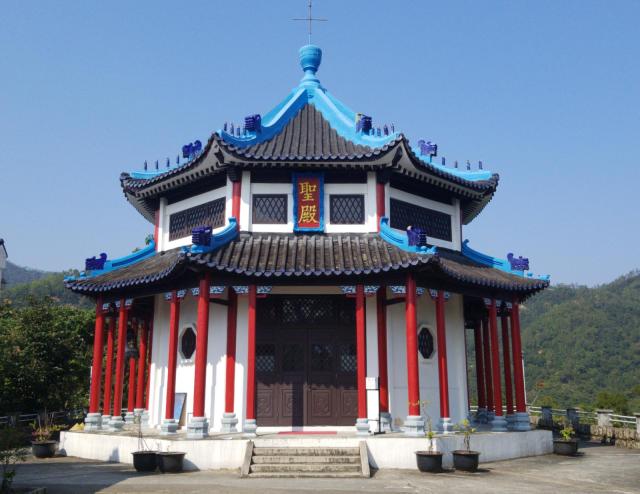
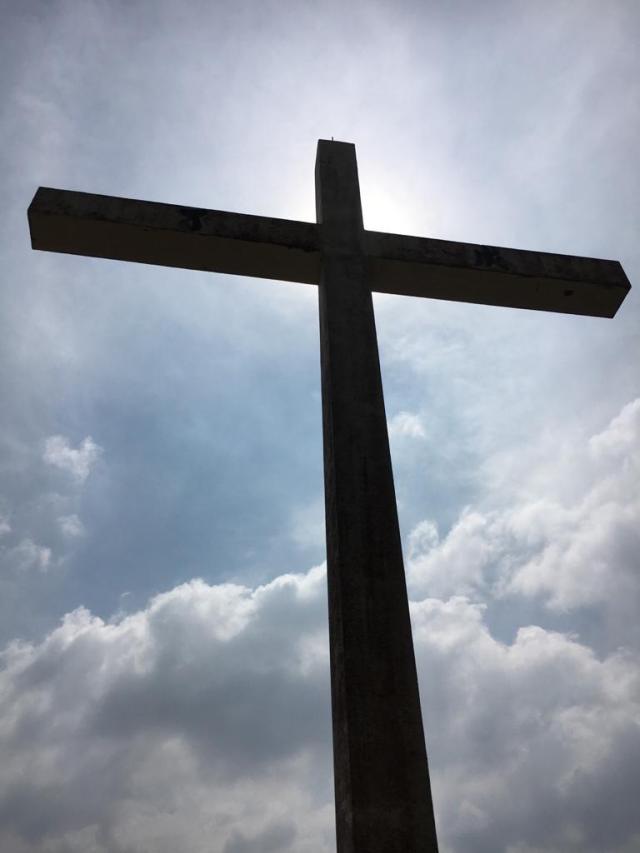



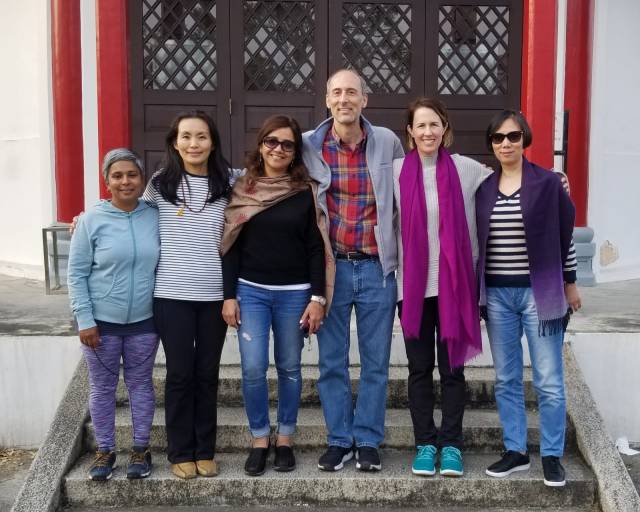
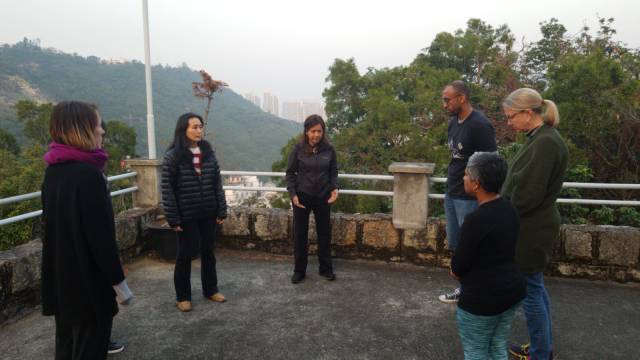







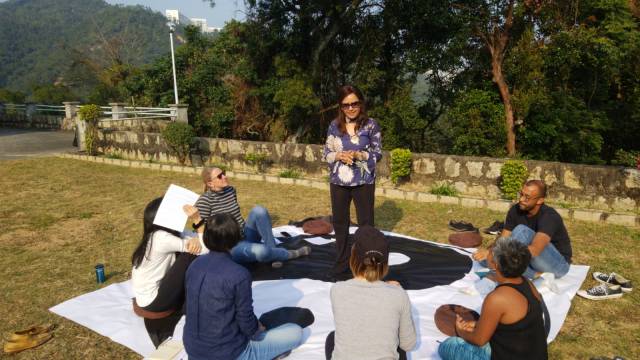




Is there a particular translation of the Dao de jing you recommend?
We are using William Martin’s translation and his commentary. Here’s a note from the online course I took with him: “One note as we begin our journey together. I will be using passages from four different renditions of the Tao Te Ching that I have written over the past couple of decades. A Path and a Practice contains my own translation/rendition of the book. The Parent’s Tao Te Ching, The Couple’s Tao Te Ching, and The Sage’s Tao Te Ching are more free expressions of the Tao written to speak to specific situations in ordinary life. I hope you find each approach helpful.”
Pingback: The Path to Loving Consciousness: The Univocal Message of Three Wisdom Traditions | Social Conscience and Inner Awakening